Tapioca pudding is a timeless treat with global flair. This ultimate guide introduces the basics, cultural variations, and recipe ideas, your starting point for everything related to tapioca pudding.
Tapioca pudding has earned its place as a comfort food classic across cultures and generations.
Whether you grew up eating it warm by the spoonful or only recently spotted it in a trendy dessert café, there’s more to this humble dish than meets the eye.
From its role in traditional cuisines to its modern-day adaptations, vegan, fruity, spiced, or tropical, tapioca pudding continues to evolve without losing its nostalgic charm.
This page brings together everything you need to know: essential ingredients, global variations, recipe ideas, and helpful tips.
Whether you’re a curious beginner or looking to expand your tapioca repertoire, this is your one-stop hub for all things tapioca pudding.
Recommended: How Healthy Is Tapioca Pudding?
What is Tapioca Pudding?
Tapioca pudding is one of the tapioca recipes, a creamy dessert made with tapioca pearls, milk or a milk alternative, sweetener, and often eggs for richness.
The pearls, derived from the starch of the cassava root, give the pudding its signature chewy texture.
When cooked slowly, the mixture thickens into a smooth, custard-like consistency with tender pearls suspended throughout.
While it’s traditionally served plain or with a touch of vanilla, variations may include coconut milk, fruits, or spices, depending on cultural preferences.
Its comforting texture and simple ingredients have made it a staple in kitchens around the world, from American diners to Southeast Asian homes.
What Does Tapioca Pudding Taste Like?
Tapioca pudding has a creamy, lightly sweet flavor with a soft vanilla aroma. What sets it apart is the texture.
The tapioca pearls become chewy and slightly springy when cooked, adding a fun contrast to the smooth pudding base.
Unlike rice pudding or custard, it isn’t dense or overly rich. Instead, it’s light and soothing.
Some people find the texture unusual at first, but many grow to enjoy it.
You can serve it warm or chilled, and it works well with toppings like fruit, coconut, or chocolate chips.
The flavor stays mild, which makes it a great base for adding different tastes without losing its appeal.
The pudding’s texture and balance make it a favorite for those who enjoy simple, comforting desserts with a little twist.
Related Posts
How to Make Chocolate Tapioca Pudding
The Best Tapioca Pearls for Pudding
Tapioca Bubble Tea: The Boba’s Chewy Star
Is Tapioca Pudding Good for You?
How to Eat Tapioca Pudding as a Diabetic
How to Make Chocolate Tapioca Pudding
History and Origin of Tapioca Pudding
The origins of tapioca pudding can be traced back to the pre-Columbian era, with indigenous peoples of South America utilizing cassava root for various culinary purposes.
It has deep cultural roots that began with Indigenous tribes in the Amazon Basin, who first used the cassava root to extract starch for cooking.
This early use laid the foundation for tapioca-based dishes.
As cassava spread through trade, it became a key ingredient in African cooking, blending into local traditions and recipes.
European colonization helped move tapioca further across the globe, especially into the Caribbean and eventually North America.
By the late 1800s, tapioca pudding appeared in American cookbooks and became a common homemade dessert.
Its simplicity and accessible ingredients made it popular in everyday cooking.
Over the years, it took on nostalgic value in American homes, often flavored with vanilla or chocolate.
Today, tapioca pudding reflects a global journey through Indigenous, African, Caribbean, and American kitchens.
It stands not only as a dessert but also as a product of cultural connection and shared food traditions across time.
Related: How to Make Tapioca Pearls
Tapioca Pudding in the United States
Tapioca arrived in the United States through global trade and gradually became a recognizable ingredient in American kitchens.
Its popularity surged in the early to mid-20th century when boxed tapioca products became widely available.
These convenient mixes made it easy for home cooks to prepare tapioca pudding, turning it into a staple dessert.
Its creamy texture and mild flavor appealed to families looking for simple, satisfying sweets.
During times of rationing and economic hardship, tapioca pudding stood out as an affordable comfort food.
As interest in traditional American recipes grew, it gained nostalgic value and remained a symbol of homemade cooking.
Even today, tapioca pudding holds its place in American culinary history, favored for its unique mouthfeel, straightforward preparation, and connection to mid-century home life.
It continues to be enjoyed across generations as both a retro dessert and a gluten-free option.
Related: What Are Tapioca Balls?
What’s in Tapioca Pudding: The Key Ingredients Behind Its Comforting Flavor
Tapioca pudding is built on a few simple ingredients that come together to create its creamy texture and delicate sweetness.
Each ingredient plays a role in shaping its taste, smoothness, and aroma.
Here’s what goes into making this classic dessert special.
Tapioca Pearls
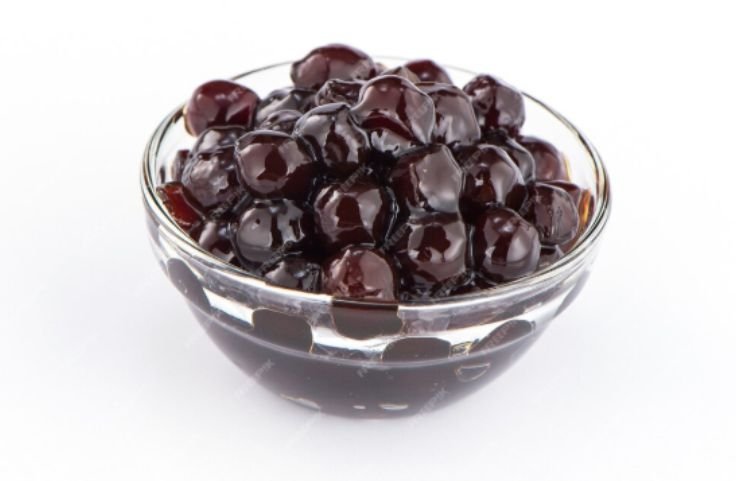
Tapioca pearls are the key ingredient for tapioca pudding’s chewy texture.
Made from manioc starch, these pearls come in small, large, and instant forms, each affecting the dessert differently.
Small pearls cook quickly and provide a soft bite, while large pearls offer a chewier texture but need more soaking and cooking time.
Instant tapioca pearls are pre-cooked and dehydrated, making them ideal for quick preparation, though their texture may differ from traditional types.
Choosing the right size of pearls and preparing it properly impacts how smooth or chewy your pudding turns out.
Whether you’re making a quick dessert or sticking to a traditional recipe, knowing how each type of tapioca pearl behaves helps you get the best result.
It’s all about balancing time, texture, and taste in every spoonful. See an in-depth guide on tapioca pearls.
Milk
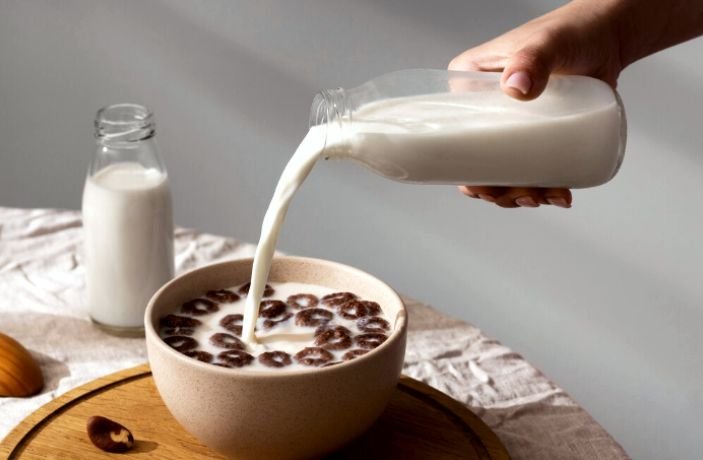
Milk gives tapioca pudding its creamy body and comforting richness.
Whole milk is traditional, but coconut, oat, or almond milk are great alternatives for dairy-free versions.
Each adds a unique twist: coconut brings tropical sweetness, oat delivers extra creaminess, and almond offers a light nutty touch, all enhancing texture and taste.
Sugar
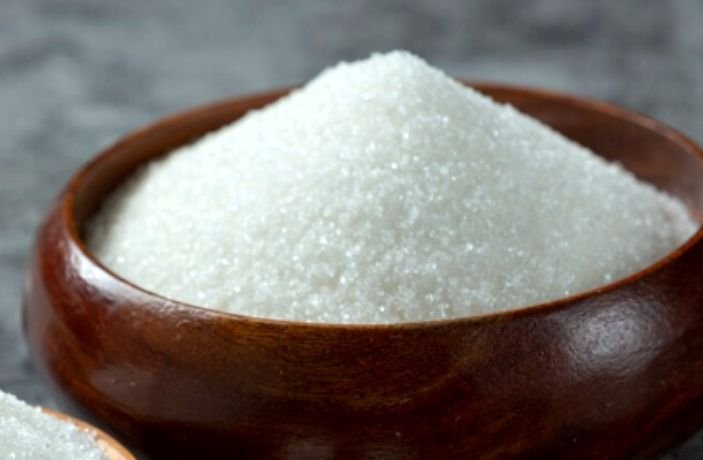
Sugar adds the gentle sweetness that balances tapioca pudding’s soft flavors.
White sugar blends smoothly into the creamy base, but you can use honey, maple syrup, or stevia for variation.
Each sweetener changes the flavor slightly, allowing you to create a pudding that’s either indulgent or subtly sweetened to taste.
Eggs

Eggs give tapioca pudding its signature custard-like texture. When gently heated, they thicken the mixture and make it silky.
To prevent curdling, cooks use a method called tempering, slowly warming the eggs before mixing them in.
For vegan alternatives, cornstarch or chia seeds can mimic this creamy thickening effect beautifully.
Vanilla Extract
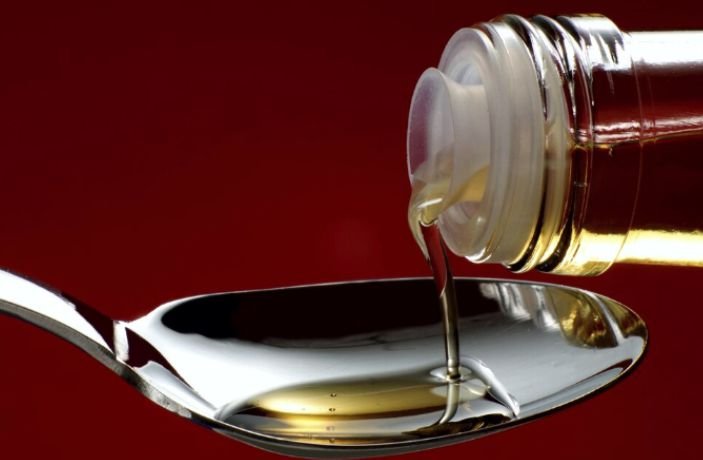
Vanilla extract deepens the flavor of tapioca pudding, turning a simple dessert into something warm and inviting.
A teaspoon of pure vanilla extract or seeds from a vanilla bean adds natural aroma and complexity.
Its subtle fragrance enhances the creamy base and ties together all the other ingredients in harmony.
Optional Add-Ins
Tapioca pudding is more than just a creamy dessert; it’s a blank canvas for your favorite add-ins.
By customizing it with fruits, spices, or texture-rich toppings, you can create a version that suits your taste.
Fresh fruits like bananas, mangoes, or berries add sweetness and color, while dried fruits offer a chewy contrast.
Chocolate chips or a spoonful of cocoa powder bring richness, turning the pudding into a chocolatey treat.
For a touch of spice, try cinnamon or nutmeg to add warmth and depth.
Extracts like coconut or almond can introduce subtle, unexpected flavors.
Nuts and seeds, such as almonds or pecans, offer crunch and extra flavor.
These mix-ins not only change the texture and taste but also make each bowl more personal.
With endless combinations, tapioca pudding easily adapts to your cravings and creativity.
Modern Substitutions: A New Way to Enjoy Tapioca Pudding
Tapioca pudding can easily fit your lifestyle without losing its comforting charm.
With a few smart swaps, you can tailor this classic dessert to meet your taste and needs.
Plant-Based Milk Options
If you’re cutting out dairy, there’s no need to give up the creamy texture you love.
You can use plant-based milks like almond, oat, or coconut milk.
Almond milk adds a nutty flavor and works well if you prefer a lighter base.
Oat milk gives a naturally creamy result, making it a favorite for many.
Coconut milk, thicker and more full-bodied, brings a mild sweetness and works great if you enjoy a tropical touch.
Choose the milk that suits your taste or dietary plan and enjoy a smooth, flavorful pudding without the dairy.
Better-for-You Sweeteners
You don’t have to rely on white sugar to sweeten your tapioca pudding.
There are plenty of options that work just as well and might even be better for your health goals.
Try maple syrup for its rich, earthy sweetness or agave nectar for something lighter.
If you’re watching your sugar intake, stevia can give you the sweetness without the spike.
Each sweetener has its own flavor, so you can adjust the pudding to match your preferences while still keeping the creamy, satisfying feel.
Natural Flavor Boosts
You can go beyond vanilla to build flavor in your pudding. Try mixing in cinnamon or nutmeg if you want a cozy, warm note.
These spices pair well with the subtle taste of tapioca and add depth without overpowering the dish.
You can even blend vanilla with these spices to create layers of flavor.
It’s a simple way to give the pudding your personal touch while keeping the ingredient list short and natural.
Fresh Add-Ins for Texture and Taste
Want more bite or flavor? Add-ins like chopped fruit or toasted nuts can bring contrast and nutrition.
Bananas, berries, or diced mango can add color and natural sweetness. For crunch, throw in a handful of almonds or walnuts.
These additions give you more control over texture and taste, turning a simple bowl of pudding into something more exciting.
You can mix and match depending on what you have or what you feel like.
How is Tapioca Pudding Made?
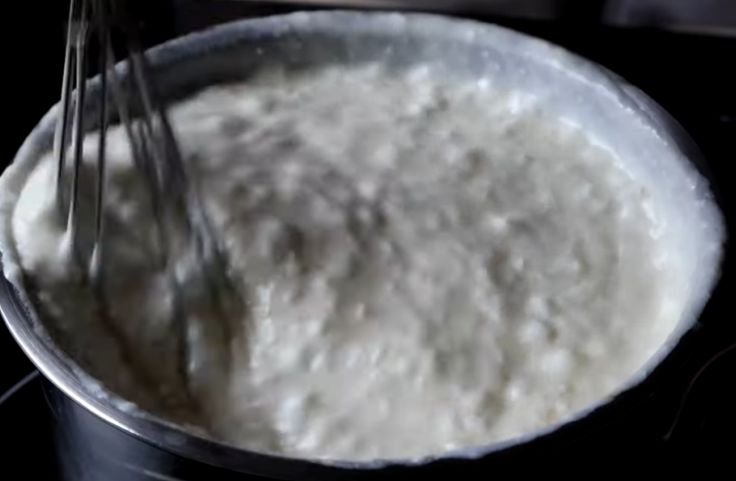
Tapioca creamy pudding is made by slowly cooking tapioca pearls in a sweetened milk base until they soften and turn translucent.
The process typically begins by soaking the pearls to help them cook evenly.
Once softened, they’re simmered with milk and sugar over low heat until the mixture thickens and the pearls develop their signature chewy texture.
Eggs are often added by tempering them into the hot mixture, creating a rich, custard-like consistency.
A dash of vanilla is usually stirred in at the end to enhance the flavor.
There are different methods for making tapioca pudding, each offering its own convenience.
The stovetop version is classic and offers full control over texture. Slow cooker methods are great for set-it-and-forget-it ease, while no-egg or vegan variations use plant-based ingredients for dietary needs.
For a complete walkthrough with tips and ingredient swaps, visit our detailed recipe guide: How to Make Tapioca Pudding.
Types of Tapioca Pearls Used in Pudding
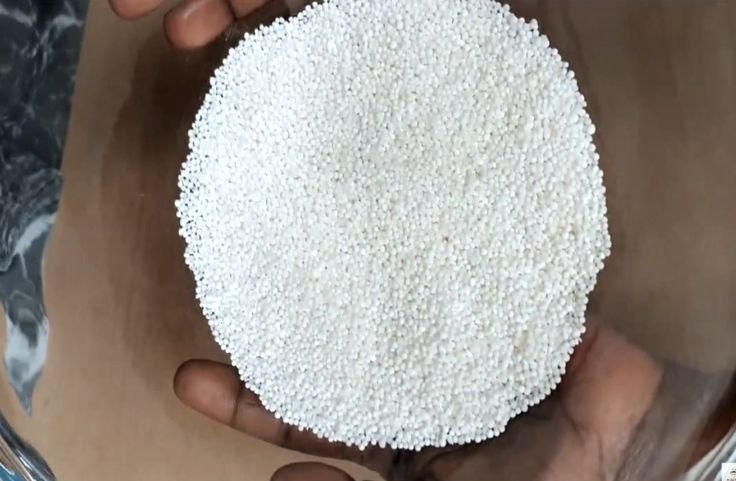
Not all tapioca pearls are the same. Depending on the size and origin, each type brings its own texture and cooking time.
Here’s how they shape your pudding experience:
Small Pearl Tapioca: These tiny white pearls are the traditional choice for pudding. After soaking and slow cooking, they become tender and slightly chewy, blending smoothly into the creamy base without overpowering the texture.
Large Pearl (Boba-Like): These pearls are thick, dark, and chewy, best known from bubble tea. When used in pudding, they offer a bold bite and work well in chilled, modern-style desserts with tropical or fruity flavors.
Instant or Quick Tapioca: Instant tapioca is perfect when you want pudding in a hurry. It doesn’t need soaking, cooks fast, and thickens quickly. The texture is smooth but lacks the chew of whole pearls.
Sabudana (Used in Indian Versions): Sabudana is common in Indian puddings like kheer. After soaking, the pearls turn soft and sticky, absorbing spices like cardamom. It creates a warm, spiced dessert with a delicate, almost custard-like finish.
Want more guidance on choosing the right pearl? Check out: The Best Tapioca Pearls for Pudding
Global Variations of Tapioca Pudding

Tapioca pudding has traveled far beyond its origins, picking up flavors from every corner of the world.
In India, it’s known as sabudana kheer, pearls simmered in milk with cardamom, saffron, and a sprinkle of toasted nuts.
Thailand brings a tropical twist, blending coconut milk with tapioca and topping it with fresh mango for a refreshing dessert served cold.
Brazil turns it into a sweet indulgence by using condensed milk and sometimes layering in fruits like guava or passion fruit.
Across Africa and the Caribbean, warm spices like nutmeg, cloves, and cinnamon give the pudding a rich, comforting depth perfect for family gatherings.
Meanwhile, in Western kitchens, the classic version remains a favorite, made with milk, sugar, eggs, and vanilla for a creamy, custard-style treat.
Each region gives tapioca pudding its own story and flavor, making it a dessert that feels both familiar and full of surprise.
Looking for recipes? Visit: Tapioca pudding recipes to try.
Popular Tapioca Pudding Flavors and Variations
Tapioca creamy pudding is more than a classic vanilla dessert. It’s a canvas for all kinds of flavors that suit different tastes and diets.
Chocolate tapioca creamy pudding is rich, silky, and perfect for cocoa lovers. Coconut milk brings a creamy, dairy-free twist with a hint of tropical flavor.
Vegan versions skip the eggs and dairy entirely, using plant-based milk and sweeteners without sacrificing texture.
Chai-spiced pudding offers a warming blend of cinnamon, ginger, and cloves, perfect for cozy moments.
If you’re craving something fruity, berry-infused tapioca adds bursts of freshness from raspberries, blueberries, or strawberries.
For those watching their sugar, keto and sugar-free versions use low-carb milk and natural sweeteners like stevia or monk fruit.
These modern takes allow you to enjoy pudding without the guilt. With so many ways to prepare it, you’ll never run out of new flavors to try.
Ready to experiment in your kitchen? Check: Different tapioca pudding recipes.
Health Profile: Is Tapioca Pudding Good for You?
Tapioca pudding can be a smart choice, depending on how you make it and how much you eat.
Tapioca itself is gluten-free and naturally low in fat, making it suitable for those with celiac disease or looking to cut down on fats.
It’s high in carbohydrates, though, which means portion control is key, especially if you’re watching blood sugar levels.
Traditional recipes can be rich in sugar, milk, and eggs, which may not work for everyone.
Allergens like dairy and eggs are also something to consider if you have sensitivities.
The good news is you can make healthier versions at home. Use plant-based milk like almond or oat, skip the eggs, and cut back on sugar or use natural alternatives like maple syrup or monk fruit.
With a few swaps, a tapioca creamy dessert can fit into a balanced lifestyle.
Want the full breakdown? Read: Is tapioca pudding healthy? Nutrition and alternatives.
Tapioca Pudding for Special Diets
No matter your dietary needs, you don’t have to give up tapioca pudding. With a few simple changes, you can make it work for you.
Here’s how to adjust your pudding to fit special diets:
Gluten Free
You don’t have to miss out on tapioca pudding if you’re avoiding gluten.
Tapioca pearls are naturally gluten-free, which makes them a great base for desserts that won’t trigger sensitivities.
Just make sure any added ingredients, like thickeners, vanilla extract, or sweeteners, are certified gluten-free.
Watch out for hidden gluten in processed toppings or packaged flavorings.
Stick to whole, clean ingredients for peace of mind.
Once cooked in milk or plant milk, these little pearls give you the creamy texture you want without the worry.
It’s an easy dessert that fits perfectly into a gluten-free lifestyle.
Dairy Free
You can still enjoy rich, creamy tapioca desserts without using a drop of dairy. Swap cow’s milk for almond, soy, oat, or coconut milk.
Each one brings a slightly different flavor, so you can experiment to find the one you love.
Coconut milk gives a tropical twist, while oat milk creates a mild, smooth base.
Avoid regular butter and cream, use dairy-free alternatives or simply leave them out.
The tapioca pearls absorb plant milk just as well, delivering that thick, satisfying bite.
Add natural sweeteners like maple syrup or agave to finish. Your pudding stays creamy, comforting, and 100% dairy-free.
Vegan
Going vegan with tapioca pudding doesn’t mean giving up comfort food. You can make the pudding completely plant-based with a few easy swaps.
Replace milk with oat or coconut milk for a creamy texture.
Skip the eggs and use cornstarch, arrowroot, or even blended silken tofu to thicken.
Natural sweeteners like maple syrup or dates keep things clean. Add fruit, nuts, or cinnamon for extra flavor.
The result? A rich, spoonable pudding that’s kind to animals and fits your plant-powered lifestyle.
It’s proof that vegan desserts don’t have to be bland; they can be just as good as the original.
Paleo or Keto
Tapioca pearls are high in starch, so they’re not keto or paleo approved. But you can still enjoy a pudding-like treat that mimics the texture.
Use chia seeds, flaxseeds, or riced cauliflower simmered in almond or coconut milk.
Sweeten it with monk fruit, erythritol, or stevia to keep carbs low. Add vanilla, cinnamon, or cacao powder for flavor without the sugar crash.
It won’t be a traditional pudding from tapioca, but it satisfies the craving and keeps you on track with your goals.
With the right swaps, you don’t have to ditch dessert; you just have to reimagine it.
How Does Tapioca Pudding Differ from Rice Pudding?
Tapioca pudding and rice pudding are both creamy, comforting desserts, but they differ in texture, ingredients, and tradition.
Tapioca pudding uses small pearls made from cassava starch, giving it a smooth, springy bite.
Rice pudding is made with grains of white or short-grain rice, which cook down into a thick, hearty consistency.
Flavor-wise, tapioca tends to be lighter and more neutral, while rice pudding is often richer and milkier.
When it comes to health, tapioca is gluten-free and lower in fat, but rice provides more fiber and a few extra nutrients.
Rice pudding is more traditional in European and Middle Eastern cultures, while tapioca has strong roots in South America and Asia.
In terms of popularity, both hold their own, but your preference may come down to texture and dietary needs.
Want a full comparison? Read: Tapioca pudding vs rice pudding: What’s the difference?
Conclusion
Tapioca pudding is more than a nostalgic dessert. It’s a global dish that adapts easily to your tastes and dietary needs.
Whether you prefer it warm and classic or chilled with coconut and mango, it offers comfort in every spoonful.
From traditional recipes passed down through generations to modern, plant-based versions, tapioca pudding continues to stay relevant in kitchens around the world.
You’ve now seen its history, learned how it’s made, explored different pearls, flavors, and health tips, all in one place.
So whether you’re new to it or coming back for a favorite treat, tapioca pudding invites you to make it your own.
Try it your way and see why it’s stayed loved for so long.
Frequently Asked Questions
Is tapioca pudding gluten-free?
Yes, tapioca pudding is naturally gluten-free because it’s made from tapioca starch, which comes from the cassava root and contains no wheat-based ingredients.
Can you freeze tapioca creamy pudding?
Yes, you can freeze tapioca pudding in airtight containers, but the texture may change slightly upon thawing. Stir well before serving for best results.
Is it safe for babies or toddlers?
Tapioca pudding is generally safe for babies over 6 months, but avoid added sugar, cow’s milk, or eggs unless already introduced without allergic reactions.
Can dogs eat tapioca pudding?
It’s not recommended. While tapioca is safe, pudding often contains sugar, dairy, or artificial sweeteners that can be harmful to dogs in large amounts.

Chimeremeze Emeh is a writer and researcher passionate about Africa’s most transformative root crop—cassava. Through his work at cassavavaluechain.com, he explores the entire cassava industry, from cultivation and processing to its diverse applications in food, health, and industrial use.
He also writes for palmoilpalm.com, where he shares his extensive experience and deep-rooted knowledge of palm oil, covering red palm oil, palm kernel oil, and refined products. His work there reflects his lifelong connection to agriculture and his commitment to promoting sustainable value chains in Africa.
Driven by curiosity and purpose, Chimeremeze aims to shed light on how cassava continues to empower communities, strengthen food systems, and link traditional farming wisdom with modern innovation.

